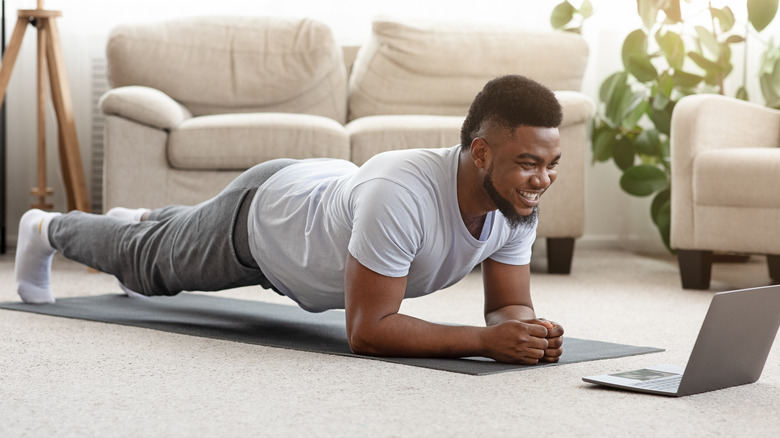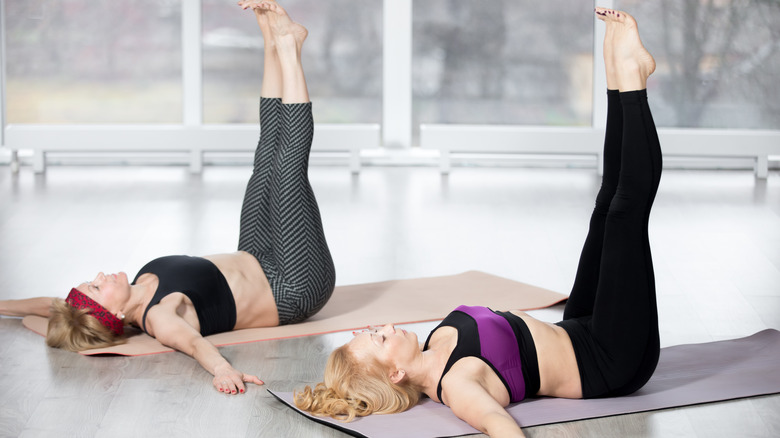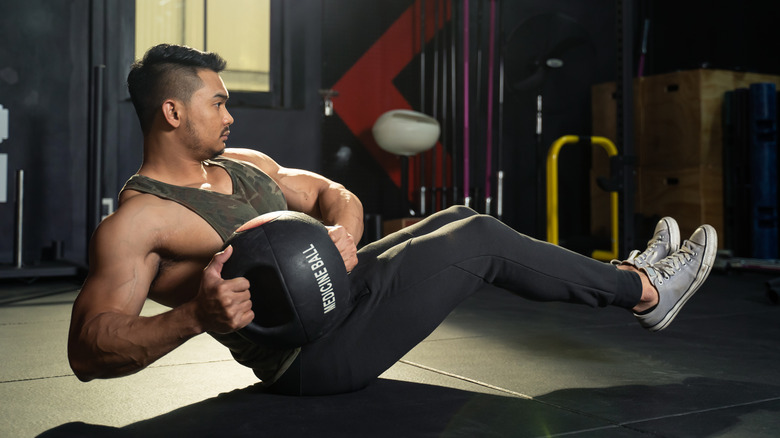Don't Make This Mistake When Doing Lower Ab Exercises
Whether you're an avid gymgoer or prefer a good Pilates class, one attribute that sparks the envy of anyone is a healthy six-pack. Having chiseled abs takes work on the mat and in the kitchen (yes, a healthy diet is key to targeting belly fat). Although many core exercises, like crunches, target the upper part of the rectus abdominis, a complete core routine also includes exercises to target the abs below the belly.
Ok, so you have to have really low body fat in order to see these because we tend to store our fat there. But the core isn't just about what everyone else sees. Having a strong core also helps stabilize your spine. What tends to happen when you sit at a desk all day is that your core gets weak. This causes the top of the pelvis to tilt forward (an anterior tilt), resulting in a slight arch in your lower back. If you find this same arch in your lower back while doing lower ab exercises, it could spell lower back pain (via Men's Health).
Lower abs exercises that might cause an arch in your back
Your back can easily arch during any lower abdominal exercises that require you to lie on your back. Think about the hollow hold, where your arms are raised over your head while your legs are extended and raised at an angle to the floor. The closer your heels are to the floor, the more likely your lower back will want to pop away from the floor. This puts more pressure on your lower back while requiring less from your lower abs. Instead, keep your legs at an angle so your lower abs are engaged while pressing your lower back into the floor or mat (via Men's Health).
You can also arch your back while doing planks. Even if your boot camp instructor tells you to drop your butt closer to the floor, be sure that your belly doesn't sink so much that your lower back arches. This puts compression on your lumbar spine while your abs get a bit of a break. You'll still be able to work your core and protect your lower back if you drop to your knees and tuck your tailbone (via Women's Health). Think about the top of the pelvis moving back towards your spine (a slight posterior tilt).
Other mistakes in your abs routine
Your core involves other muscles than your rectus abdominis, such as your transverse abdominis, which serves as a stabilizing belt around your waist. No exercise or diet can make your transverse abdominis show because it sits deep within your torso. However, exercises that work your transverse abdominis can protect your lower back and keep you free from injury. You might be a rock star when it comes to holding planks for two minutes, but it's always a good idea to incorporate different types of core exercises to keep your body guessing. This includes rotation exercises like wood choppers and rotating forearm planks.
Rather than just doing isolation exercises that target your core, you can also work on your core while doing compound exercises like squats and deadlifts. These are ways to strengthen your entire core, including the transverse abdominis and the erector spinae in your back. Just like your biceps and shoulders need a break from training, so do your abs. Don't feel you have to do ab exercises every day, especially if you know you'll need your core strength for other strength exercises (via Oxygen).



